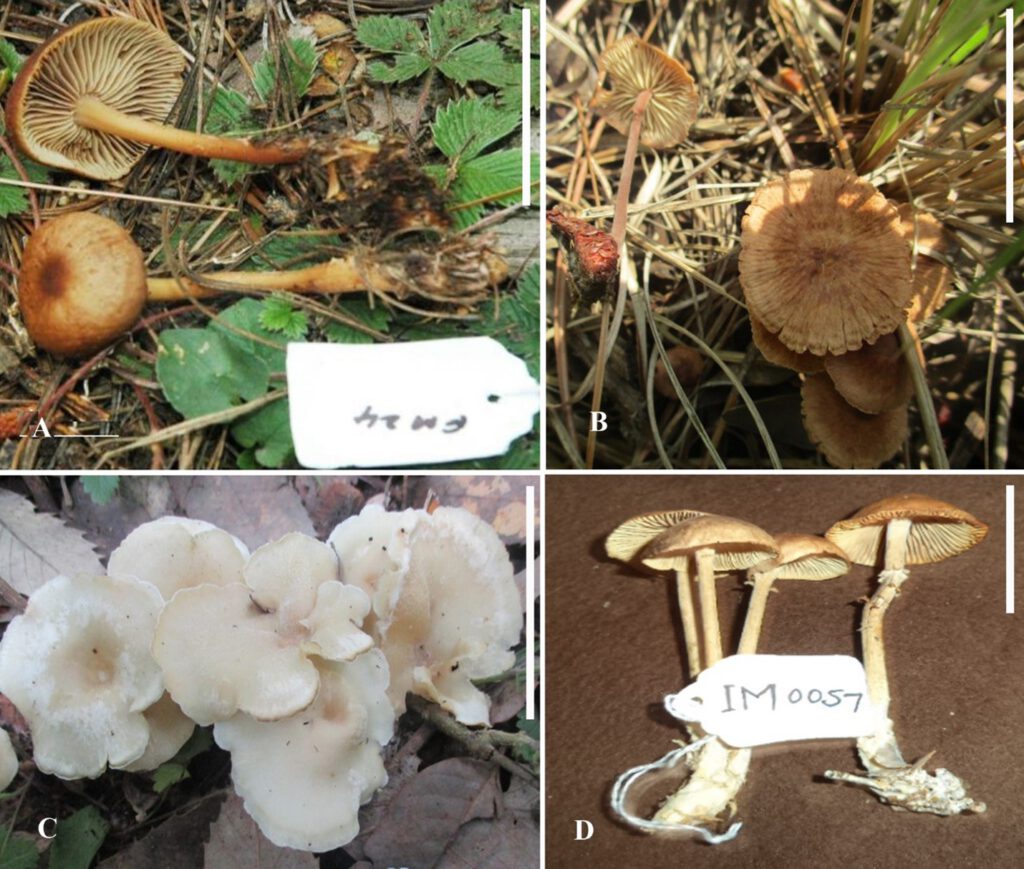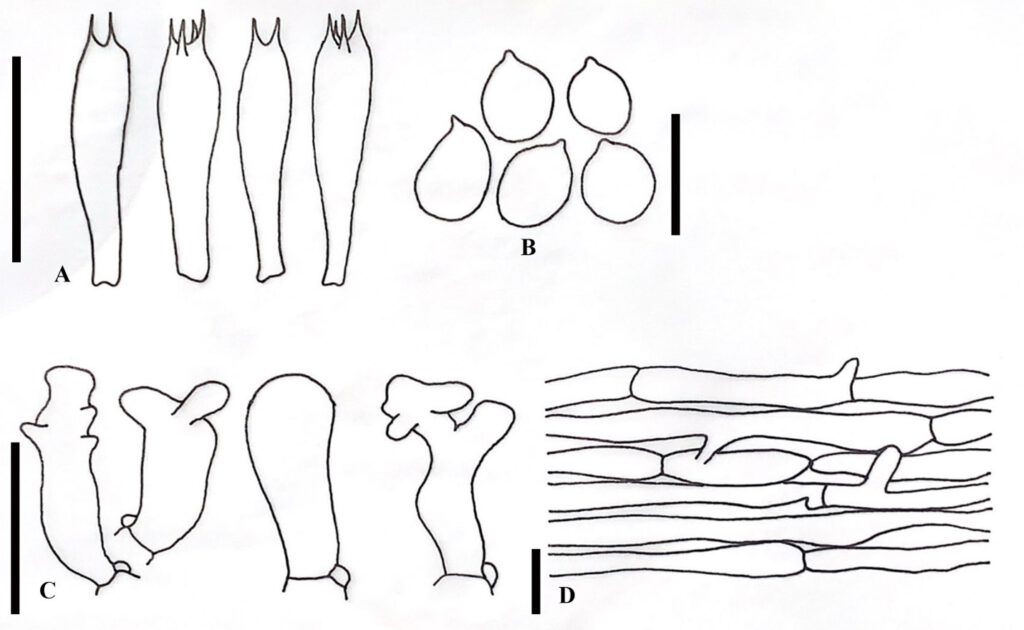Gymnopus ocior (Pers.) Antonín and Noordel. Mycotaxon 63: 365, 1997. Fig. 64,67
MycoBank number: MB 437636; Index Fungorum number: IF 437636; Faces of fungi number: FoF 10623;
Basidiocarps small to medium. Pileus 21−32 mm in diam., parabolic to pulvinate, smooth, dark reddish (10R2/3) at disc, becoming orange-brown (10R3/3) towards the margin, margins smooth, decurved. Lamellae adnexed, distant to subdistant, broad, unequal, entire, smooth, orange-brown (10YR7/6). Lamellulae present, regular, margins entire. Stipe 43 × 3 mm, equal to clavate at the base, hollow, smooth, yellowish brown (7/6 10YR) at apex become reddish brown (10R4/8) towards base. Odour and taste not observed. Basidiospores [20/2/1], (5.0‒) 6.2‒7.1 (‒7.5) × (2.5‒) 3.5‒3.9 (‒4.2) µm, L × W = 6.6 × 3.6 µm, Q = (1.2‒) 1.7− 2 (‒2.8), Qe = 1.9, ellipsoid to obovoid, thin-walled, hyaline with 5% KOH, inamyloid, non-guttululate. Basidia 19.9‒31.5 × 6.2‒9.3 μm, narrowly clavate, thin-walled, 2-4- spored. Cheilocystidia 19.8‒32 × 4.3‒8.9 μm, narrowly clavate, clavate to diverticulate, thin-walled. Pleurocystidia absent. Pileipellis hyphae 4.3‒5.8 μm in diam., thin-walled, septate Dryophila-type, branched, hyaline in 5% KOH. Stipitipellis hyphae 5.2‒6.4 μm in diameter, thin-walled, cylindrical, septate, branched. Clamp connections present in all tissues.
Habitat – Grows on fallen dead leaves and branches of Pinus wallichiana A. B. Jacks.
Material examined – Pakistan, Province Gilgit-Baltistan, Fairy Meadows, District Diamer, 35° 26′ 5.78″ N, 73° 56′ 31.59″ E, at 3300 m a.s.l. near Nanga Parbat, 18 July 2016, Abdul Ali and Abdul Nazir Khalid (LAH24250).
Notes – Gymnopus ocior is characterized by its dark red to orange-brown pileus with parabolic to pulvinate centre; distant to subdistant, broad, adnexed orange brown-lamellae; equal to clavate stipe colored yellowish brown toward apex and reddish brown towards base; ellipsoid to obovoid, inamyloid, spores; narrowly clavate, clavate to diverticulate cheilocystidia; absence of pleurocystidia; presence of Dryophila-like structure in the pileipellis. The present collection matches well with that of the original description, except for the smaller size of the spores (5.0–7.0 × 2.5–4.0) μm, larger cheilocystidia (16–60 × 6.0–12 μm), and yellowish white lamellae (Antonín et al. 2013). The present collection represents the first record of G. ocior for Pakistan.

Figure 64 – Basidiocarps of A. Gymnopus ocior; B. G. bunerensis; C. Collybiopsis biformis; D. G. subnudus in the field. Scale bars: A-D=50 mm.

Figure 67 – Gymnopus ocior (LAH 24250: New geographical record) A Basidia. B Basidospores. C Cheilocystidia. D Pileipellis. Drawings by Muhammad Ishaq. Scale bars: A,C =20 μm, B, D = 10 μm.
